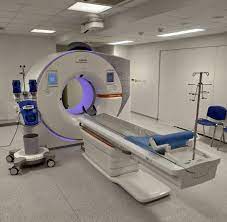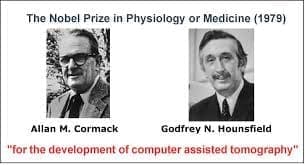Hello BRIGHT Run Family,
We are already into February, 2023. Time surely flies.
At times, we feel that so much has happened within a short period of time. At times, we experience stagnation or boredom due to the lack of change.
If we really want to measure the change of some variable, it would be good to observe it over regular intervals. The intervals could be time, space, or something else against which you want to detect the change.
Let me tell you an interesting story on the topic of regular interval.
There was a time when an X-ray source was used to produce only two-dimensional images. The X-ray source sent out a signal which passed through the organ of interest and reached a detector that enabled the production of an image of the organ.
When an X-ray of the brain was produced, it turned out to be foggy in its appearance. Once a physician complained about that to Godfrey Hounsfield who was a research engineer in a record company. Hounsfield later worked with a neuroradiologist to rotate the X-ray source and its detector. Using the information from the detector, Allan Cormack, a physicist, was able to reconstruct computerized images from different slices (cross-sections) of brain, resulting in a series of two-dimensional images which contained more detailed information compared to a single two-dimensional X-ray.
This technique is called computed tomography or CT. When first used on a patient, the X-ray source and the detector rotated at regular intervals of one-degree increments. In 1979, Hounsfield and Cormack were awarded the Nobel prize in medicine for their invention of CT. Today, there has been significant improvement in terms of quality and the time of acquisition of CT. In summary, the rotation by uniform increments played a key role in the acquisition of CT. (More details on this: How This Record Company Engineer Invented the CT Scanner (ieee.org))
It is relatively easier to maintain uniformity in the intervals if you make plans beforehand. In a practical data world, when you try to work with retrospective information, you are likely to encounter irregularity in the collection intervals of your data.
That being said, the month of February is a bit irregular (compared to the remaining 11) in terms of the number of days it has, but it regularly experiences a leap day in every four years. Sometimes, an apparent non-uniformity could have some uniformity with a change of perspective. Do you find that interesting?
Hope the coming days will broaden our perspectives and help us discover unseen, inherent beauty in our daily lives.
Best,
Ashirbani
Dr. Ashirbani Saha is the first holder of the BRIGHT Run Breast Cancer Learning Health System Chair, a permanent research position established by the BRIGHT Run in partnership with McMaster University.

